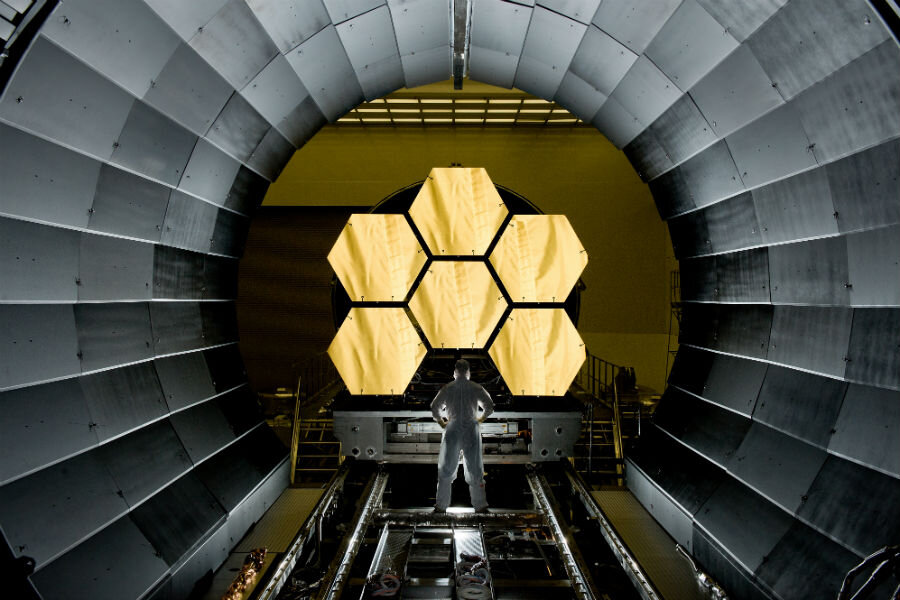Hubble's successor: Why do we need an $8 billion telescope?
Loading...
Can you put a price on uncovering the origins of the universe?
NASA can. The US space agency, alongside a few international collaborators, are putting the finishing touches on an enormous mirror for a $8 billion telescope this week that will eventually launch into space with an ambitious mission.
When completed, the James Webb Space Telescope (JWST) will be the most powerful space telescope ever made. As a successor to the Hubble Space Telescope, the JWST is designed to study the history of the universe, from the first light after the Big Bang to how solar systems formed, and to determine if there are planets able to support life like Earth, according to NASA.
Astronomer John Mather, the telescope's project scientist at NASA, told National Public Radio that the telescope is likely capable of discovering things not yet even thinkable by scientists.
"Every time we build bigger or better pieces of equipment, we find something astonishing," he said.
Completion of the telescope's 6.5 meter-long mirror marks a milestone for the project. Constructed out of 18 separate segments made of an ultra-lightweight metal called beryllium, the mirror, once it reaches a million miles from Earth to begin its observations, will unfold like a piece of origami.
"So far everything, knock on wood, is going quite well," said Bill Ochs, the telescope's project manager at Goddard Space Flight Center in Maryland, in an interview with NPR. For months, he has been working 10-hour shifts, taking the hexagonal mirror segments and attaching them to the telescope's “cobweb frame” using glue and screws, NPR reports.
JWST is an international collaboration between NASA, the European Space Agency (ESA), and the Canadian Space Agency (CSA). The NASA Goddard Space Flight Center is overseeing its construction.
NASA anticipates the telescope will be cleared for liftoff aboard a European Ariane 5 rocket from French Guiana, on the north Atlantic side of South America, in October of 2018.
When it does, it is expected to join Hubble, which has been monitoring space since 1990, and has far outperformed expectations.
"The observatory's in excellent condition right now," Hubble Mission Office head Ken Sembach, of the Space Telescope Science Institute (STScI) in Baltimore, which operates the telescope's science program, told Space.com last year. Hubble team members hope to keep the telescope operational through at least 2020.
The iconic telescope has aided astronomers in numerous groundbreaking discoveries, including confirming that the universe's expansion is speeding up rather than slowing down, and finding that supermassive black holes are at the center of most, if not all large galaxies.
Using both space telescopes at the same time "really gives you a more panchromatic view of the universe than you would get just from Hubble alone, or just from Webb alone," Dr. Sembach said.






